Keeping your floors clean and well-maintained is essential for both aesthetics and longevity. Different types of flooring—be it hardwood, tile, carpet, or laminate—require specific care to preserve their beauty and functionality. Understanding the unique needs of each material can prevent damage and enhance your home’s overall appeal.
In this guide, we’ll explore effective cleaning techniques and maintenance tips tailored to various flooring types, ensuring your surfaces remain spotless and inviting. Whether you’re dealing with stubborn stains or routine upkeep, mastering these methods will help you create a welcoming environment for family and guests alike.
Common Types of Flooring
Flooring options can greatly influence the look, feel, and functionality of a space. With numerous materials available, it’s essential to choose the one that aligns with your needs, preferences, and budget. Here are some of the most common types of flooring:
- Hardwood: Hardwood flooring offers timeless beauty and durability. Available in a variety of wood types like oak, maple, and cherry, hardwood brings warmth and elegance to any room. It can be sanded and refinished multiple times, making it a long-lasting investment.
- Vinyl: Vinyl flooring is a versatile and affordable option that comes in sheets, tiles, or planks. It is known for its resilience and water resistance, making it ideal for kitchens, bathrooms, and high-traffic areas. Vinyl also mimics the appearance of wood or stone, offering design flexibility.
- Linoleum: Linoleum is an eco-friendly flooring material made from natural ingredients such as linseed oil, wood flour, and cork. It is highly durable and available in a wide range of colors and patterns. Linoleum is also resistant to moisture and is often used in kitchens and bathrooms.
- Tile (Ceramic and Porcelain): Ceramic and porcelain tiles are popular for their durability and resistance to water. Both types are available in a variety of colors and designs, making them suitable for both floors and walls. Porcelain tiles are more water-resistant, while ceramic tiles are easier to cut and install.
- Stone (Marble, Granite, Slate): Stone flooring adds a luxurious feel to any space. Natural stones like marble, granite, and slate are highly durable and can withstand heavy foot traffic. Each stone type offers unique colors and patterns, but regular maintenance is required to keep them looking their best.
- Concrete: Concrete floors are a modern, industrial option often used in commercial spaces. They can be polished, stained, or stamped to create a wide range of textures and designs. Concrete is highly durable but can feel cold without proper insulation.
- Laminate: Laminate flooring is an affordable alternative to hardwood. It consists of multiple layers, including a photographic layer that mimics wood, stone, or tile. Laminate is easy to install and maintain, making it a popular choice for DIY homeowners.
Cleaning Methods by Flooring Type
Keeping your floors clean is essential not only for maintaining the aesthetic of your space but also for extending the lifespan of your flooring. Each type of flooring requires specific cleaning techniques and products to ensure that it remains in excellent condition without causing damage. This guide provides detailed cleaning methods for various flooring types, helping you take the best care of your floors.
Hardwood Floors
Hardwood floors are known for their durability and timeless beauty, but they require special care to maintain their finish and prevent damage. Here are the best cleaning methods for hardwood floors:
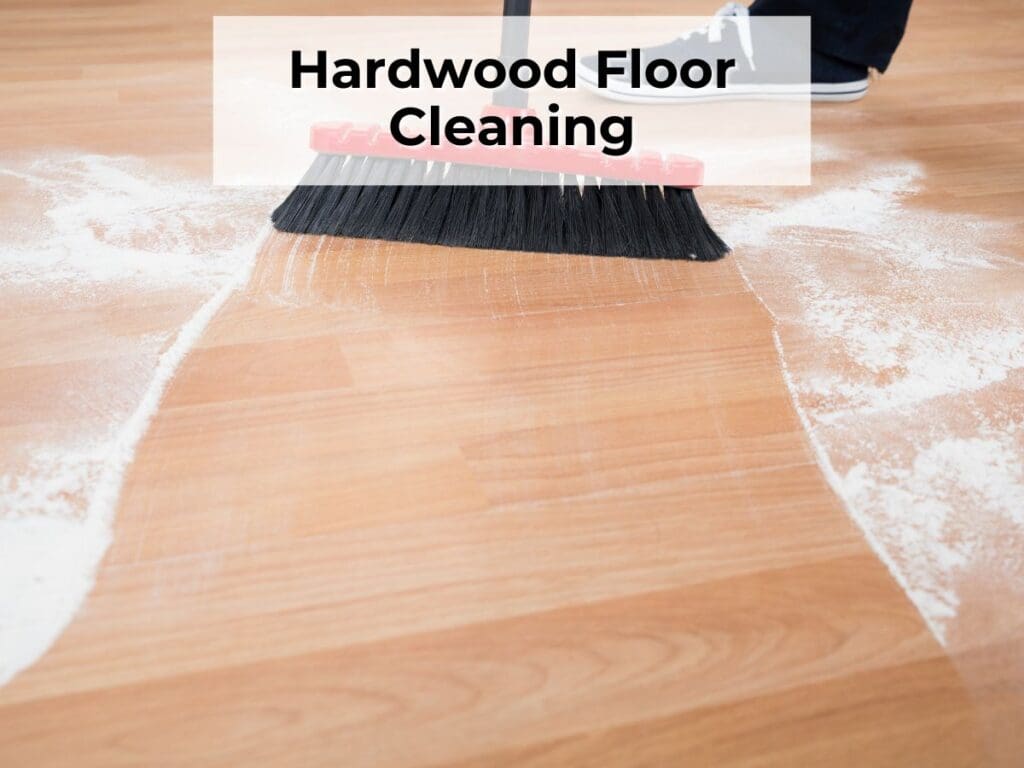
- Daily Cleaning: Use a microfiber dust mop or broom to remove dirt and debris. Avoid using a vacuum with a beater bar, as it can scratch the surface.
- Weekly Cleaning: For a deeper clean, use a damp mop with a hardwood floor cleaner that is pH-neutral. Avoid excess water, as moisture can damage hardwood over time.
- Spills: Clean spills immediately with a soft, dry cloth. Water can cause the wood to warp, so make sure the area is dry after wiping up the spill.
- Avoid Steam Mops: Steam can penetrate the wood, causing warping or cracking. Stick to dry or damp mopping techniques.
- Polishing: Every few months, polish your hardwood floors to restore shine and protect the surface from scratches. Use a hardwood-specific polish for the best results.
Vinyl Floors
Vinyl floors are incredibly durable and resistant to water, making them a low-maintenance option for many homes. However, they still require regular care to look their best.
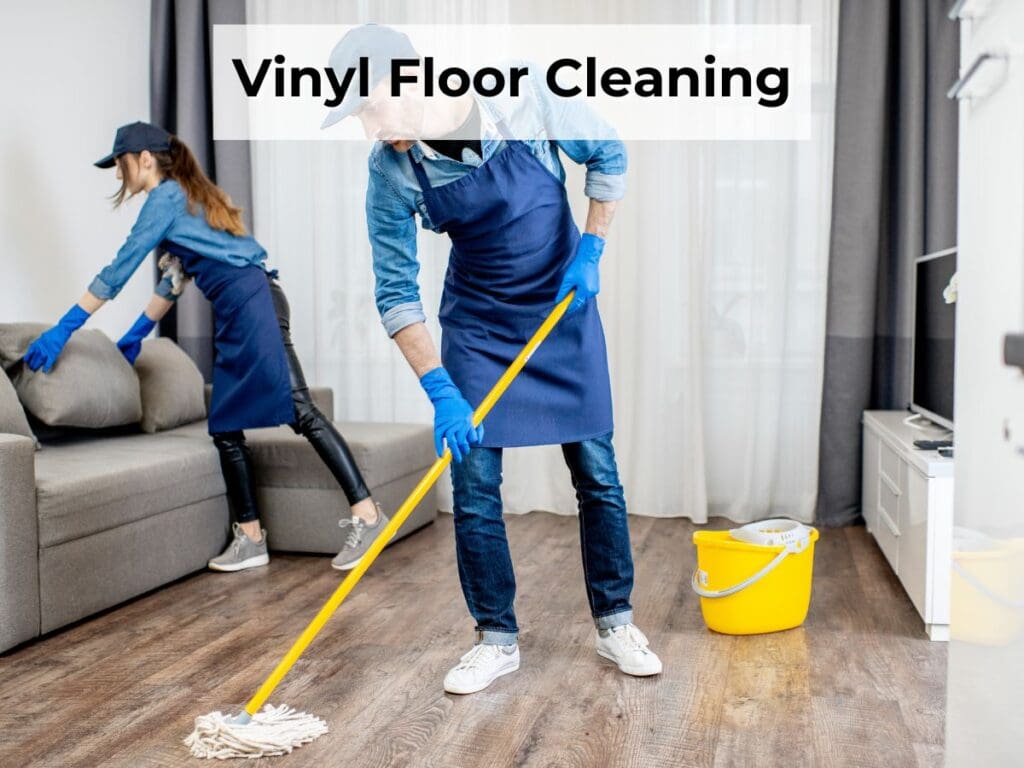
- Daily Cleaning: Sweep or vacuum your vinyl floors regularly to remove dust and dirt. A vacuum without a beater bar is ideal to avoid scratching the surface.
- Mopping: For regular mopping, use a cleaner specifically formulated for vinyl floors. Avoid harsh chemicals and overly abrasive cleaners, as they can damage the surface. A mixture of water and mild dish soap is often sufficient.
- Avoid Standing Water: Although vinyl is water-resistant, standing water can seep into the seams and cause damage over time. Make sure to wipe up spills promptly and avoid soaking the floor.
- Preventing Scratches: Place mats or rugs in high-traffic areas to prevent scratches and scuffs. If your furniture is heavy, consider using protective pads under the legs.
Linoleum Floors
Linoleum is an eco-friendly and durable option, but it does require specific care to maintain its appearance. Unlike vinyl, linoleum is made from natural materials, which means it can be more sensitive to certain cleaning methods.
- Regular Sweeping: Like other flooring types, regular sweeping or vacuuming is important to keep linoleum-free from dirt and debris that can cause scratches.
- Mopping: Use a pH-neutral cleaner and a damp mop to clean linoleum floors. Avoid excessive water, as linoleum can absorb moisture, which can lead to warping. A mixture of water and mild dish soap is a good choice for most cleaning tasks.
- Stain Removal: For tougher stains, use a mixture of baking soda and water to create a paste. Gently scrub the stain with a soft cloth, then rinse the area with clean water.
- Polishing: Linoleum floors can benefit from occasional polishing. A linoleum-specific polish will help restore shine and protect the surface from wear.
Tile Floors
Tile floors, whether ceramic or porcelain, are among the easiest types of flooring to clean. Their water resistance and durability make them ideal for kitchens and bathrooms, but they still require proper cleaning to maintain their appearance and prevent staining.
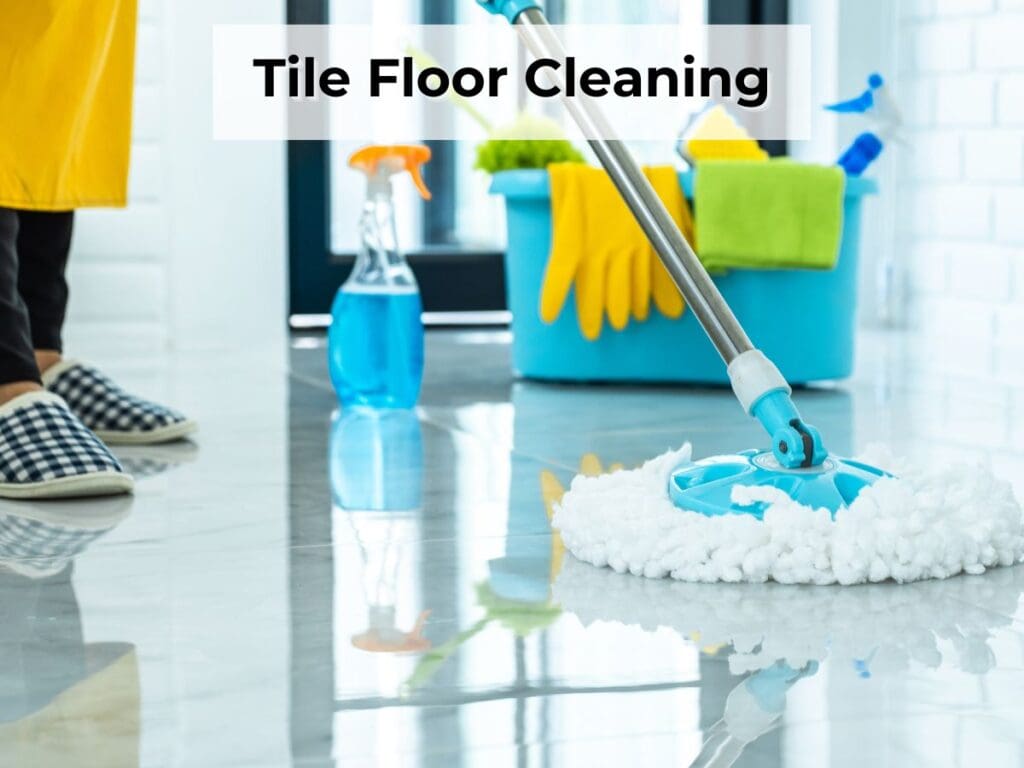
- Sweeping: Use a soft-bristle broom or vacuum to remove dirt and dust. This is particularly important for tile floors, as dirt can settle into the grout lines, making it harder to clean later.
- Mopping: A mixture of warm water and a tile-safe cleaner is usually sufficient for regular mopping. Avoid using harsh chemicals like bleach, which can damage the grout or the tile’s surface.
- Grout Cleaning: Grout is prone to staining and can become discolored over time. To clean grout lines, use a mixture of baking soda and water or a commercial grout cleaner. Apply the cleaner with a soft brush, scrub gently, and rinse with water.
- Sealing Grout: To prevent staining and water absorption, it’s a good idea to seal your grout every year. This will help to keep the grout looking fresh and clean with minimal effort.
Stone Floors
Natural stone floors, such as marble, granite, and slate, require more specialized care compared to other flooring types. Since stone is porous, improper cleaning methods can lead to staining or damage.
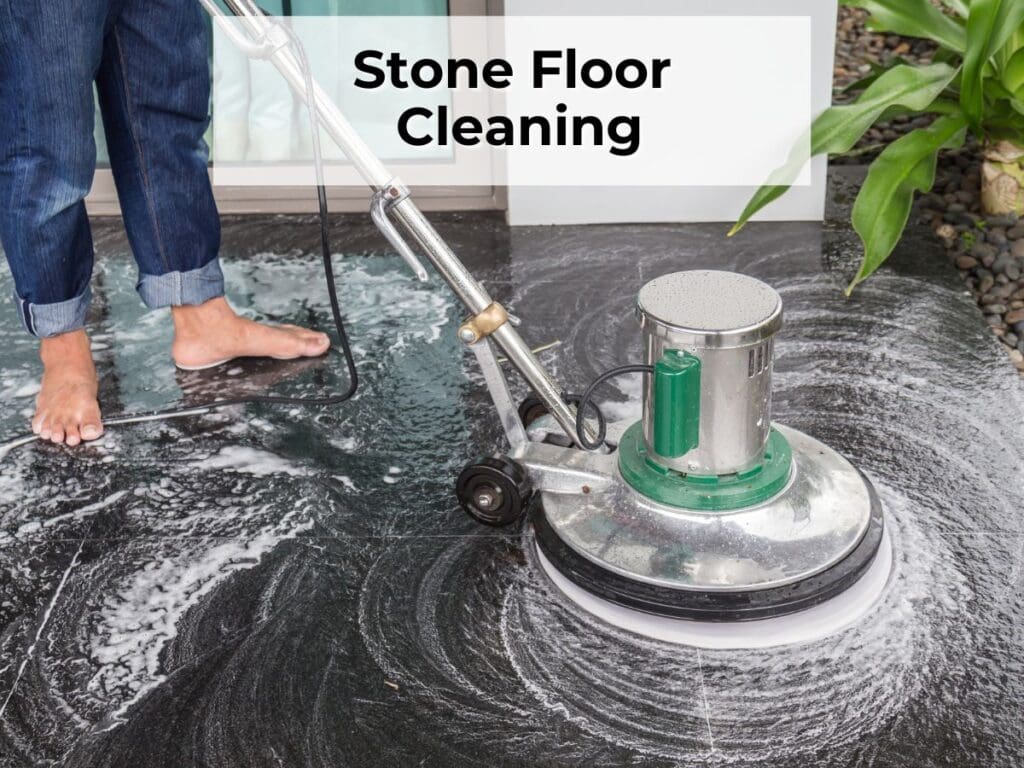
- Sweeping: Use a soft broom or dust mop to remove dirt and dust daily. Be careful not to use abrasive materials, as they can scratch the surface of the stone.
- Mopping: Clean stone floors with a damp mop and a cleaner specifically designed for natural stone. Avoid acidic cleaners like vinegar or lemon juice, as these can etch the stone’s surface. A pH-neutral cleaner is always the safest choice.
- Stain Removal: For stains, you may need to use a poultice made from baking soda and water. Apply the poultice to the stain, cover it with plastic wrap, and let it sit for 24 hours. Once dry, remove the poultice and rinse the area with water.
- Sealing: Stone floors should be sealed regularly to protect them from moisture and staining. Depending on the type of stone, sealing may be required annually or every few years.
Concrete Floors
Concrete floors are popular in modern and industrial-style spaces. While they are durable, they do require regular maintenance to prevent stains and wear.
- Sweeping: Sweep or vacuum regularly to remove dirt and dust. Concrete can be scratched by abrasive materials, so it’s important to keep the surface free of debris.
- Mopping: Use a mixture of water and a mild cleaner to mop concrete floors. Avoid using acidic cleaners, which can degrade the concrete over time. A pH-neutral cleaner is ideal for routine cleaning.
- Polishing: If your concrete floors are polished, you can use a specialized concrete polishing pad to restore the shine periodically. This will help maintain the floor’s sleek appearance.
- Sealing: Concrete is porous, so it’s essential to seal the surface to prevent staining and moisture absorption. Sealing should be done every few years, depending on the level of foot traffic in the space.
Laminate Floors
Laminate flooring is a cost-effective alternative to hardwood or stone, but it requires specific care to avoid damage. Since laminate is made from layers of synthetic material, excessive moisture can cause the planks to warp.
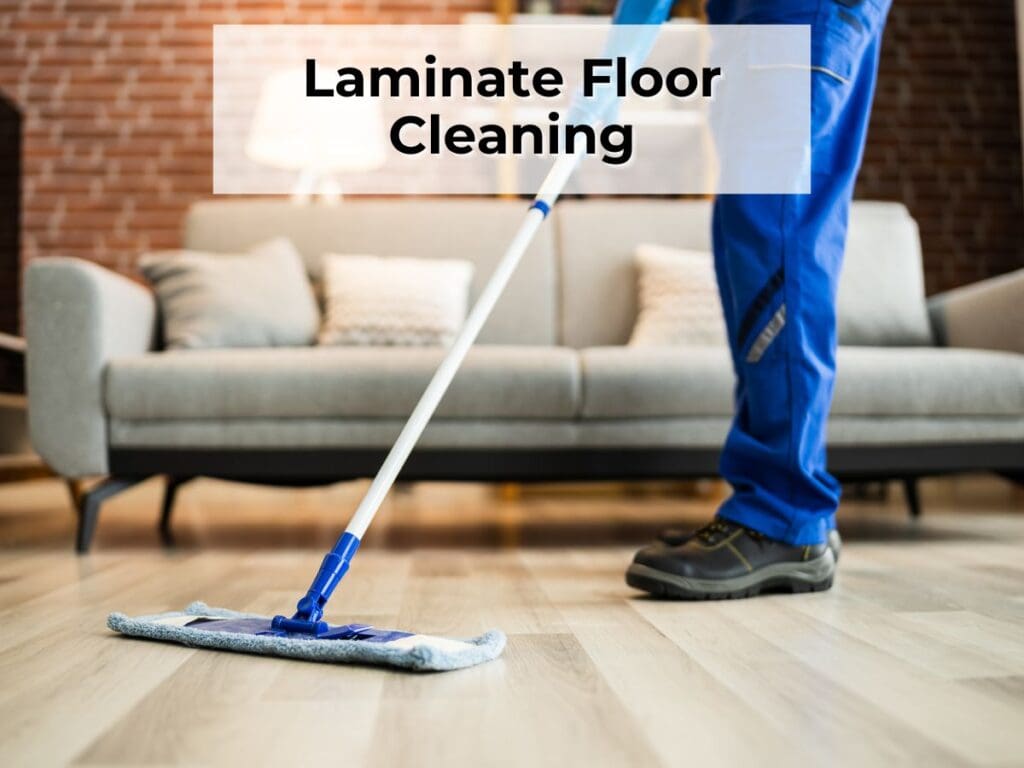
- Sweeping: Sweep or vacuum laminate floors regularly to remove dirt and dust. Use a vacuum without a beater bar to avoid scratching the surface.
- Mopping: Use a damp mop or microfiber cloth for cleaning. Avoid using too much water, as moisture can seep between the planks and cause warping. A laminate-specific cleaner is the best choice for maintaining the floor’s appearance.
- Stain Removal: For tougher stains, use a mixture of water and mild dish soap. Never use abrasive cleaners or scrubbers, as these can damage the protective layer of the laminate.
- Polishing: Laminate floors don’t require polishing like hardwood, but they do benefit from regular cleaning to maintain their shine. Use a laminate floor cleaner to keep the surface looking new.
Flooring for Wellness: Creating Healthy Indoor Environments
Incorporating the right flooring into your home is a key element in promoting a healthy indoor environment. Flooring materials like hardwood, vinyl, and tile are not only durable and visually appealing but can also contribute to better air quality by resisting dust and allergens.
Regular cleaning and proper maintenance are essential for keeping your floors in top shape, ensuring they support a clean and healthy space. By avoiding common mistakes, such as using harsh chemicals or excessive water, you can prolong your flooring’s life while fostering a wellness-focused living environment that benefits your overall health and well-being.


